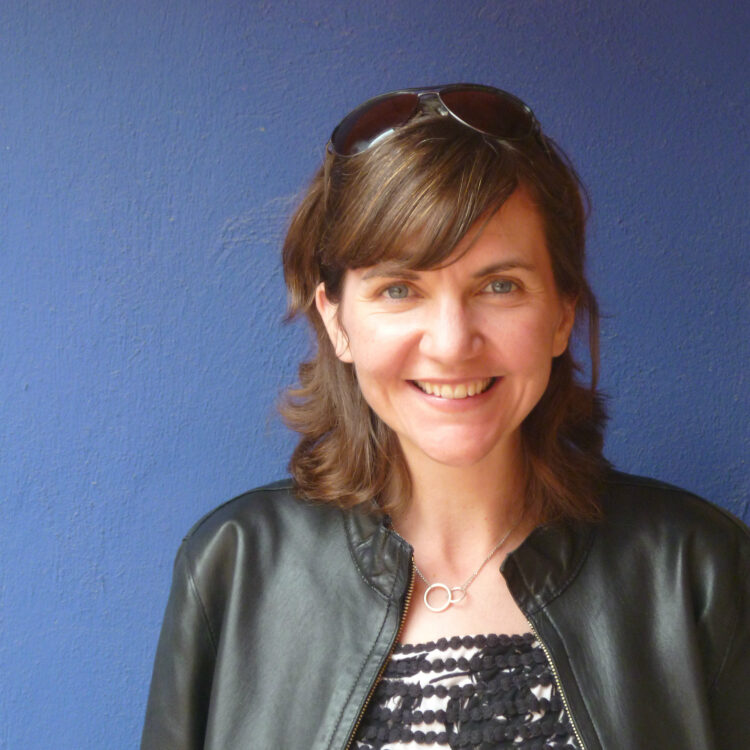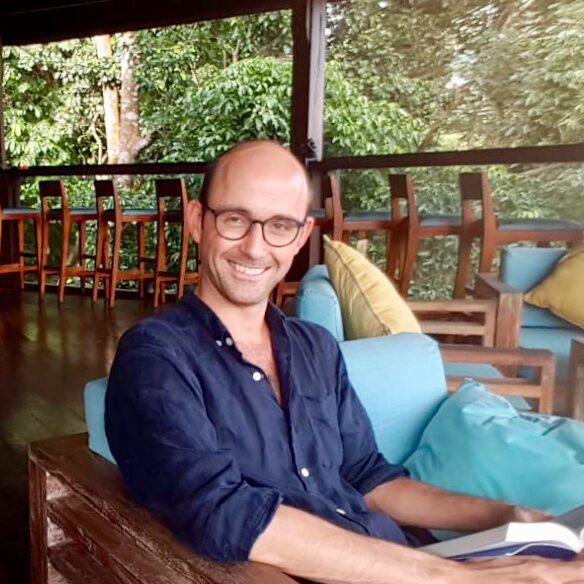A roundtable discussion featuring Seán Cubitt (Melbourne University), Adrian Ivakhiv (University of Vermont) and Elena Past (Wayne State University), organized by Ludo de Roo (Macquarie University) and Hunter Vaughan (University of Cambridge).
For some time now, media theory no longer studies one single medium – media includes anything from screen culture to media-related configurations and practices. As Lisa Parks argues in “Field Mapping: What is the Media of Media Studies?” (2020, 644), the discipline “now engages with so many different objects that it has become difficult to imagine what media studies is not.” Likewise, environmental media studies has made a similar transition: if in its first decade most ecomedia research tended to focus on explicit representations of nature on screen media, since the mid-2010s the turn to the materiality of media has opened the field for an encompassing notion of ecomateriality: at stake, now, is the matter of media.
Hence, in line with Parks’ “field mapping” of media studies, we ask: what is the material of media, and what’s “eco” about it? An example of the turn from representation and meaning-making to matter and materiality is John Durham Peters’ Marvelous Clouds (2015). Peters posits that elements such as fire and sky are media environments: these material elements are the infrastructures without which media cannot communicate: as Peters puts it, elements are “infra” to the “structure” of media (2015, 36). Peters’ work, along with numerous other influential authors and texts of this mid-2010s scholarly transition (amongst others, Jennifer Gabrys; Pietari Kääpä; Richard Maxwell and Toby Miller; Jussi Parikka; Lisa Parks; Nicole Starosielski), helped to open a range of horizons for environmental media studies – perhaps best represented by the two journals Journal for Environmental Media (JEM) and Media+Environment (M+E), both launched in 2020.
Both journals are recurrently discussed in the roundtable below, which was exactly what we hoped for when we first discussed the roundtable with Maria San Filippo, former editor-in-chief of NRFTS: despite their overlapping interest in environmental media, JEM and M+E approach this burgeoning subfield with different epistemological roots and interdisciplinary goals. Ludo de Roo’s forthcoming article in NRFTS, “Mediating the Elemental: An Immaterialist Ethics for Ecomaterialist Media Theory,” maps this intellectual spectrum and suggests bridging Peters’ philosophy of elemental media with Hunter Vaughan’s notion of “ecomaterialism” (2018), with which Vaughan highlights how media practices also always consume matter – through their production, distribution, consumption, and waste cycles.
Rather than setting these various approaches over-against each other, however, each of the contributors searches for ways of reconciling, or “mediating,” these two approaches – as Seán Cubitt puts it in the roundtable, this is one of the great challenges of this moment in ecocritical media studies. The conversation below attests to the polysemous diversity of what qualifies as “elements” and ‘materiality” of media: if our contributors speak of “materialities” and “materialisms” (in the plural), this means there is no one single catch-all term. If there is not one medium, neither is there not one matter that defines media.
Ludo de Roo and Hunter Vaughan, moderators of the roundtable.
Topic (i) Defining “ecomaterialism” in ecomedia theory
NRFTS: In the field of ecomaterialism, there appears much flexibility around how to define media’s “materiality.” What does the materiality of media consist of – and how is this ecocritically relevant?
Elena past:
I’m currently working on a project about Italian celluloid filmstock, so I’m thinking literally about the support materials that supplied the film industry and made filmmaking possible, and then I’m rewinding to track some of the raw materials that supplied the filmstock factory (fig. 1). For me, materialisms are a way to retool film analysis to incorporate thinking about the environmental impacts of the whole film production process, broadly conceived – to look behind the scenes and screens, and to take stock of the world ecologies (to cite Jason Moore) that underpin and shape the film industry. In my current work, “materialisms” are focused on infrastructure, industrial chemistry, and global supply chains, and they are also shaped by capital. They are ecomaterialism$, in other words, as Serenella Iovino and Serpil Oppermann suggested materialisms should be when they theorized material ecocriticism.
You ask how this is “ecocritically relevant,” and I like this question, because, as a teacher-scholar, I want to keep talking about and teaching film narratives ecocritically. In the classroom I often ponder how to translate these materialisms into film analysis, and thinking with Anna Tsing (2015, 37), I find that materialisms invite an “art of noticing” the interlaced human and more-than-human forces that make a film. They are part and parcel of the wider project of viewing film less anthropocentrically: for example, reading landscapes as protagonists, listening to soundscapes with attention to nonhuman voices, envisioning film aesthetics as conditioned by human and nonhuman labor which is in turn constrained by the affordances of specific technologies. Ecomaterialisms let us read all films ecocritically – a pedagogy I believe in, because it allows environmental discourse to emerge across genres and disciplines and course offerings, which is vitally important as climate change accelerates.
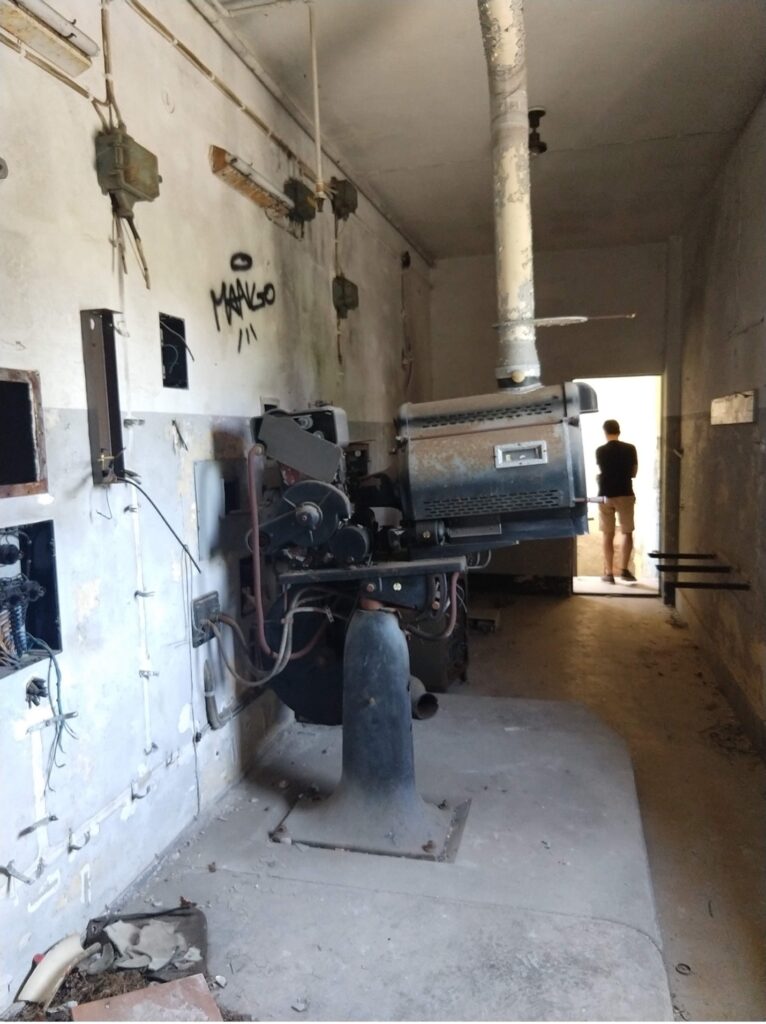
Figure 1. Film projection booth in the abandoned after-work club on the Ferrania factory grounds. Photograph courtesy of Elena Past.
NRFTS: In the field of ecomaterialism, there appears much flexibility around how to define media’s “materiality.” What does the materiality of media consist of – and how is this ecocritically relevant?
ADRIAN IVAKHIV:
I think of materialisms in two ways. The first is as part of a history of theoretical interventions, with “old” materialisms being the ones (led by Marxism) that direct attention to the material circumstances/determinants of life and the political economies that shape them, and “new” materialisms being a set of more recent attempts to revive interest in materialities of all kinds—bodies, objects, textures, “matter” itself, etc. Within these materialisms, the “materiality of media” consists of the infrastructures and actual material assemblages that make up media, from printing presses and pulp & paper factories to wires, cables, relay and transmission networks, tubes, screens, production facilities, and so on (Fig. 2). This seems equivalent to the materialisms that Elena writes about. It’s all “ecocritically relevant” because ecocritique involves understanding and accounting for our relations with the material and ecological worlds around us.
The second sense is specific to the ontology I work with and try to articulate. Material ecologies, in this framework, serve as a kind of “external” counterpart to the “social” ecologies by which “internalities” (i.e., the recognition of agency) get arranged. These in turn are the two ends of a circulation around the core of sensory/perceptual/medial ecologies, which are the actual, relational passages by which materiality and sociality get constructed. I don’t think of matter (in this framework) as “agential,” nor do I think of materialisms as about an “art of noticing” (as Elena cites Tsing saying). Noticing is crucial, but it precedes both materiality (the “final products” of relations) and sociality (the presumed agencies that are responsible for the relating); it is where everything takes place. Unfortunately, explaining this requires a complicated theoretical argument that won’t convince anyone in a short paragraph, so I should probably leave it at that. It’s ecocritically relevant because I think it offers a fresh way of thinking that allows us to ease out of the stultifying dualisms that plague concepts of “matter” and “mind,” subjectivity and objectivity, nature and culture, etc.
(Incidentally, my and Antonio Lopez’s chapter “When do Media Become Ecomedia?” in the open-access Routledge Handbook of Ecomedia Studies tries to engage with several senses of the materiality of media, as does Christy Tidwell’s chapter in that volume. And my own chapter there, “Three Ecologies: Ecomediality as Ontology,” deals with the second sense I describe above.)
Seán CubiTT:
Ontologies have always baffled me. Practices based on them maybe less so. I feel deeply distrustful of Earth-systems science, for example, with its fundamentally cybernetic ontology (if that’s the right word), or the idea of ‘environmental communication’ which (see the discussion on “milieu” below) seems to pre-empt the issue of the sender-receiver model, another cybernetic “ontology” from the same critical period in the late 1940s that gave us neo-liberalism (and more positively the UN Declaration on Human Rights, which however may also betray a set of potentially controversial ontological assumptions such as the human exception and, until the later declaration on refugees, a deeply nationalist politics (appropriate to united nations but open to accusations of anthropocentrism and border-thinking). The cool thing about media is that their materialities – infrastructural tools like inks and codecs – are constantly shifting. Often for dumb economic reasons but shifting into different capabilities at each turn. Materials are energies but because they are, they can be turned to some cruel purposes as well as new affordances.
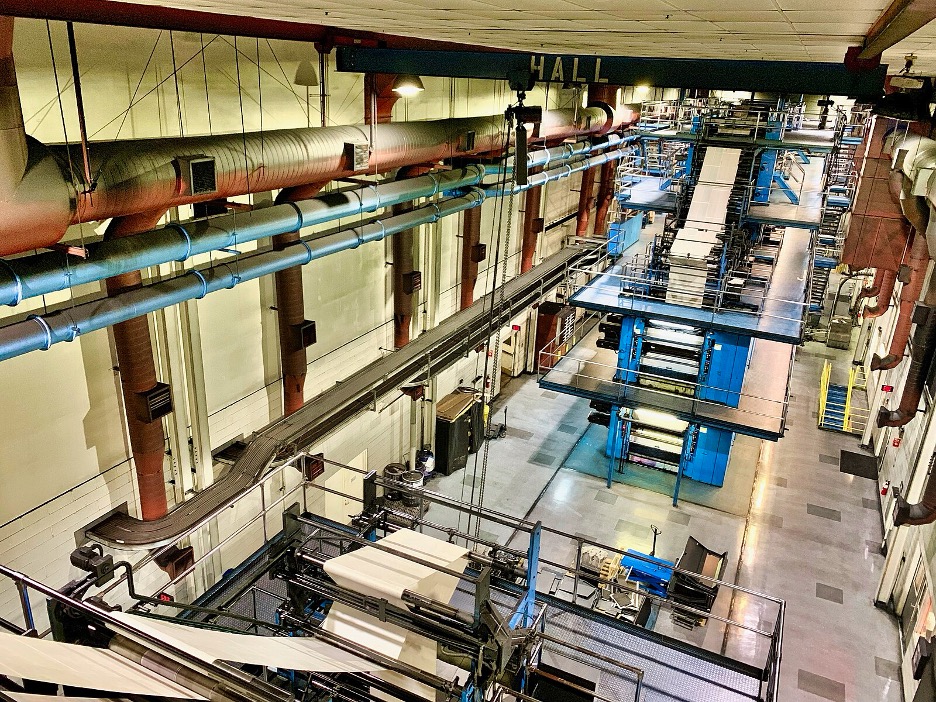
Topic (ii) Medium: Atmosphere, environment, milieu
NRFTS: From the perspective of ecocritical media studies, should there be limits to the notion of “medium” or “media”? If so, how might this be constructively designed? And if not, to what purpose?
Elena past:
Material ecocriticism, ecocritical media studies, and Environmental Humanities blur the imagined boundaries between disciplines and species and everything else, and they show how boundaries and borders are problematic, artificial, and often exclusionary. National borders? Irrelevant for radioactive fallout or polluted rivers. Linnean classifications? Ineffective for mushrooms. Film studies? Increasingly not looking at stuff shot on film. National screen studies? But wasn’t that an international co-production?
I am against the idea that we need to limit what we talk about when we talk about “media.” I personally think that the creativity unleashed by the invitation to think across borders, boundaries, analogies, materials, and elements is generative, and that capacious thinking is a gift and a key strategy in the work to unsettle narratives about progress and economic growth, habits of (anthropocentric) hierarchy, and status quo responses to the climate crisis, to name just a few. Nevertheless, I think that there are various reasons why it is useful to articulate what we’re talking about when we talk about media, and also that it’s necessary to have venues where “media” means, roughly speaking, the audiovisual industry. I think this for reasons similar to why, as an Italian film professor, I think national film studies are still worthwhile, even though they need to be complemented by transnational research. National and regional political structures shape environments through legislation and regulation, and they are shaped by and shape particular cultural politics. The infrastructures and politics of the audiovisual industry, although many and various, still coalesce in various ways, including around funding agencies, production practices, distribution networks, and trade unions, and these result in particular patterns of energy consumption, waste streams, audience responses, etc.
I embrace material ecocritical theories of eloquent matter, and love to look for emergent stories in every quarter of our universe. But I also think that media as a storytelling industry has a particular opportunity where environmental advocacy is concerned, and a particular responsibility where its impacts are concerned. I agree with Meryl Shriver-Rice and Hunter Vaughan when they argued, in the opening editorial for the Journal of Environmental Media, that it’s important that there be a conversation around ecomedia studies that is pragmatic and activist. The accelerating pace of climate change that we have lived this calendar year requires nothing less.
NRFTS: A minimal definition would define a medium in an open-ended way: a medium simply connects two distant entities. Consequently, anything can qualify as a medium – as John Durham Peters’ list of cultural techniques demonstrates. If one takes the medium of media to refer to many things, does one not risk losing a core, a place, “from” which the mediating force brings matters together?
ADRIAN IVAKHIV:
In the formative stages of what became the two journals M+E and JEM (both conceived at a 2018 workshop at the Rachel Carson Center in Munich), we debated the wider, more all-encompassing definition of media (represented best probably by John Durham Peters) as opposed to more circumscribed definitions, and I think the debates have continued since then. I fall on the more encompassing side, with the caveat that we consider media in what they do, not just what they are. In “When Do Media Become Ecomedia?” I make the point that media mediate by “shaping [the] perceptual and responsive capacities” of the things they bring together. They not only connect “two distant entities,” as you put it, Ludo, but they also enable those entities to respond to each other—perceive each other, and in turn affect each other—in specific ways.
To my mind, C. S. Peirce got at this notion of mediation through his concept of thirdness. If firstness is the ‘in-itself-ness’ of something, and secondness is the direct, causal relationality of one thing upon or in connection to another, then thirdness is the mediation of those two things. Mediation is always a mediation of a relationship by a third; it is always interpretation, a setting into a context or set of contexts by which a relationship gets framed, shaped, integrated, synthesized, prehended (to use Whitehead’s all-purpose term that encompasses apprehension, comprehension, reprehension, etc.), made visible and sensible to others, etc. Latour (2005, 37ff) distinguishes between “intermediaries,” which simply transport information, and “mediators,” which translate and transform. Anything that does the latter, I would say, counts as a medium. When Peters defines media as “enabling environments,” I see him pointing to the ways in which particular environments, elements, milieus, etc. order things in specific ways, enabling certain possibilities while foreclosing others.
All of that may seem abstract, and suggests that mediation is (in) everything. But specific structures of mediation (or “mediatization,” to use Couldry and Hepp’s term) have arisen and grown over time – they are infrastructures with specific logics (market and governance logics, etc.) – and understanding media today requires understanding how these shape our ways of connecting socially and materially with each other and the world.
Seán CubiTT:
Spot on Adrian: I like the word “mediation” because I work in/across media – everything mediates everything else. Except when it doesn’t. I use “communication” to point at the structuring of mediation for specific human but also typically economic and political purposes (depending whether you think money or power makes the anthro-world go round). National borders are a prime example – people ‘naturally’ wander across them; but they have the force of law, policing, documentation, incarceration … And yet they are in some sense unreal. Or in a Lacanian sense, they expand an Imaginary (self as separate from world) into a Symbolic (order) that attempts to impose itself on a Real that always escapes it, but which is defined by its escape (exclusion). Elena’s point about the continuing but contradictory issue of the national is exact: a national cinema has recognisable qualities (funding structures, agreements with broadcasters, protectionist policies, internal political dynamics, aesthetic histories etc) but rarely exists in a pure form (music might be a bit of an exception here: the French chanson is a taste very difficult for outsiders to acquire).
The provocation is on the nail too: but we should maybe note in passing the specificities of traditions of critique, e.g., in computational cultural studies, literary studies, musicology … and defensive walls disciplines like art history erect to limit interlopers. One day I’ll write something on James Joyce’s impact on audio and screen media (check out Barry Truax’s pioneering granular synthesis Riverrun) to demo the cornucopias missing from the disciplinary silo approach (Fig. 3). So un-ecological.
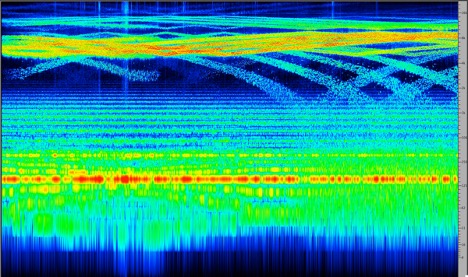
NRFTS: Given the contrast between the two tendencies – i.e., between a more expansive conception of media, and a more pragmatist definition – Could we agree on a middle ground, “mediating” between the two, so to say? For instance, Cajetan Iheka proposes “an encompassing sense of ecomedia” (2021, pp. 108-9), where the encompassing sense includes a distinction between “resource media” (e.g., uranium, oil), “elemental media” (fire, air, water, earth – and, by extension, the ecosystem), and “representational media” (films, books, poetry, photography) (fig. 4). Would such a balance of definitions and expansive inclusiveness help transcend the challenges mentioned above? What is gained, and what is lost, by defining media (and the materiality of media)?
ADRIAN IVAKHIV:
I appreciate Catejan’s effort to bring/wring some order into (out of) the different potential uses of the term “media.” At the same time, I worry that doing that will allow some of the richness and multi-dimensionality to slip away. E.g., by defining films, books, photography et al as representational, will their non-representational elements (their materiality, their political economy, their affectivity, et al) not be left aside? By relying on ill-defined “traditional” concepts like fire, air, water, and earth (why these four western common-sense notions and not the Chinese five phases, etc.?) for our concept of “elemental media,” how do we actually define their elementality? Are “resource media” anything more than things that are used as resources, considered mediatically? I see Cajetan’s list as a “for instance” rather than a full-fledged effort to order the terrain.
I appreciate Hunter’s and Meryl’s “reduced” definition of media, which they presented in the first issue of JEM:
“First, the use of the term ‘media’ in this context refers to the study of digital screen culture widely, defining the digital as all that is created by the binary code of 0’s and 1’s and is transmitted electronically. Second, our use of the term ‘media’ is limited so as to avoid a number of neologisms and analogical terms that, in our opinion, have the potential to obfuscate the objects of inquiry within environmental media studies…”
The virtue of this approach is that it clarifies what they, and the journal, will be focusing on and what they will leave outside their purview. That gives it a different scope than M+E, and that’s perfectly legitimate and productive. It actually makes the case for there being two journals that, at first blush, appear to be duplicative but on closer inspection aren’t that at all. This makes it challenging to define the field of “ecomedia studies,” but in my view it enriches the field (if it is one field and not several), leaving any consensus in abeyance (which I don’t see as a problem).
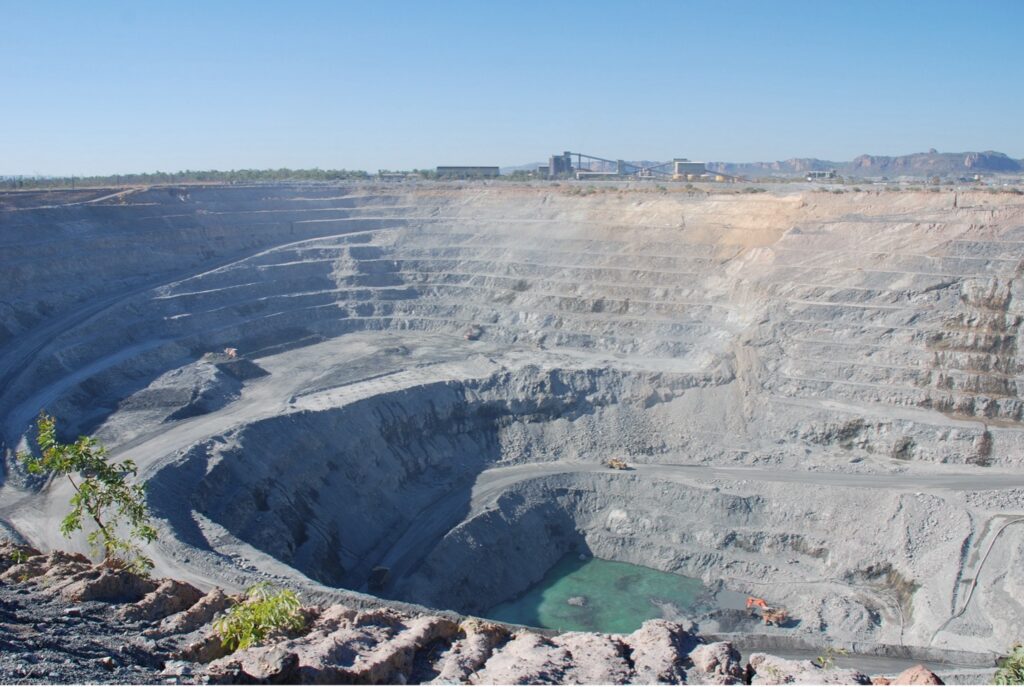
Topic (iii) The notion of “the elemental” in relation to ecomaterialist theory
NRFTS: The notion of “the elemental” in media studies seems to resist precise definition. How can we approach a conceptual description of the elemental, without falling prey to the issue of reducing it to “essences” or getting lost in a polysemous quicksand of metaphors and analogies?
ADRIAN IVAKHIV:
I tend to shy away from elemental media discourses because I am not always sure what they include or exclude within the concept of “element(s).” I like the ways they point to more traditional notions of materiality – e.g., the “four elements” (earth, air, fire, water) – but there is a risk of essentializing one or a few conceptual constructs (such as those four, as if they were universal, which they are not at all). I feel there’s a need for more critical engagement between different languages of elementality, whether these be “traditional” (e.g., the Chinese five phases: earth, metal, water, wood, fire – which are not “elements” so much as they are “phases” in a process-relational circulation of matter-energy, i.e., Qi) (fig. 5) or modern/scientific (e.g., the chemical elements). Yuriko Furuhata does a bit of this in her piece in the “States of Media+Environment” stream of M+E, but there’s a need for much more.
Seán CubiTT:
One of the great challenges of this moment in ecocritical media studies / humanities is articulating material analysis like Nicole Starosielski’s or Jussi Parikka’s, Nadia Bozak’s, etc. with the aesthetic look-and-feel and the narratives (or shapes in time) of various screen media (and also books, music, activisms). John Durham Peters’ work – especially the Clouds book – is a heartening attempt to do just that, which makes the elemental approach look like a good option for working across what effectively are two sub-disciplines with shared goals but incompatible objects of study. Individual artists use concern for materials to build new aesthetic strategies, but we lack an eco-media culture capable for example of presenting electricity. Adrian is right that perhaps discrete entities is a poor way to think the relations of say ice, water, and steam. On the other hand, those discrete, divorced components are either historical productions that have power in the contemporary world – in the way human separation from nature is a construct but one with immense performative power – OR, perhaps more interesting, the idea that crystal, flow, and dispersal are modes of The Same Water may itself be the historical construct – as it is in industrial generation of electricity. Without espousing the elemental, I’d be reluctant to remove it from the conceptual toolbox.
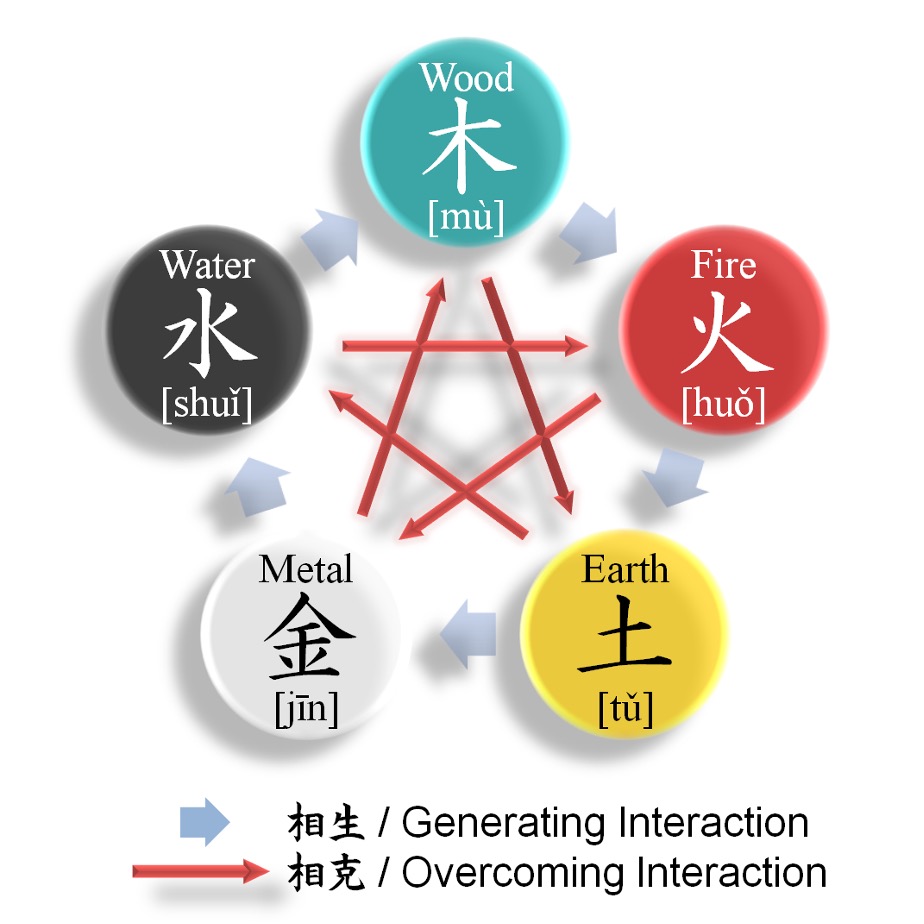
NRFTS: A standard objection when speaking with the elements is to face the challenge of comparing philosophical models – for instance, the so-called “classic” four elements of Western philosophy and East-Asian five phases model. Would shifting register – from “the elements” to “the elemental” – be a relevant way to include other worldviews, such as Indigenous knowledge systems, and other elemental philosophies?
Elena past:
I would love to hear more about Indigenous knowledge systems and the elemental. The question of the elemental will, for me, forever call to mind Primo Levi’s The Periodic Table (1975), a work by the chemist and Auschwitz survivor where elements are equally historical, political, affective, narrative, and relentlessly material. The short historical accounts cover twenty-one elements that range from across the periodic table, and the book in sum defies easy definition in its play between fiction, memoir, etymology, science manual. Levi’s elements are never absolute or exclusive, although a mistake in the lab he makes when he substitutes potassium for sodium (a mistake that almost explodes the entire lab) leads him to reflect that respect for difference matters: “I thought of another moral, more down to earth and concrete, and I believe that every militant chemist can confirm it: that one must distrust the almost-the-same […] the practically identical, the approximate, the or-even, all surrogates, and all patchwork.”
I like the notion “polysemous quicksand of metaphors and analogies,” and Seán’s notion that the elemental offers one “option for working across what effectively are two sub-disciplines with shared goals but incompatible objects of study”: that material-discursive space in ecomedia studies where not just the media objects, but also the scholarship itself can be both perplexingly technical and wildly creative. I think Primo Levi’s work embodies the balancing act this roundtable investigates but definitely does not (want to) resolve, indicating here both the vibrant potential of analogies/analogy (analog again comes to mind) and the need for each account of matter to moor itself to a recognizable human or nonhuman history, even if that history, as Seán elegantly suggests, has divorced components from their contexts.
Ludo de Roo’s article “Mediating the Elemental: An Immaterialist Ethics for Ecomaterialist Media Theory” is available in issue 22.2 of New Review of Film and Television Studies.
Sign up for NRFTS alerts so you’ll know when future articles become available, and enjoy this related read:
Seán Cubitt, Imagining Taking Tiger Mountain (by strategy): two landscapes of the Anthropocene, 1970 and 2014



